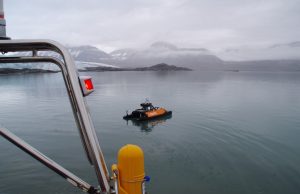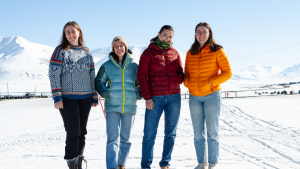 Students as partners is a buzzword in academia, and for many years UNIS has been working on the topic, but what does the term mean, and how can one practically facilitate student involvement and partnerships in everyday study life? We had a talk with both staff and students to learn more about the initiatives UNISbreakfast and UNISprout.
Students as partners is a buzzword in academia, and for many years UNIS has been working on the topic, but what does the term mean, and how can one practically facilitate student involvement and partnerships in everyday study life? We had a talk with both staff and students to learn more about the initiatives UNISbreakfast and UNISprout.
Read about it here on the UNIS website
Hurra, UNISprout is back, and it is better than ever!
Are you wondering what UNISprout is all about? Here’s a quick overview of the project:

Photo: Sil Schuuring
UNISprout is a bioCEED funded project, designed to support the planned fieldwork of Guest Master and PhD students by offering Bachelor students the opportunity to act as a field assistant. The project aims to benefit both parties, by giving Bachelor students the chance to broaden their knowledge and gain valuable experience in the field, and support Master students/ PhDs by providing an engaged field assistant and improve their teaching skills in the field/lab.
2021 starts off with four exciting projects in terrestrial Biology:
1. Development of permafrost thaw along topographical gradients and its links to vegetation
Vegetation, especially mosses, play an important role in insulating the soil from increasing air temperatures, potentially reducing permafrost thaw, thus leading to a reduced active layer depth (ALT). As of now, we have little knowledge on how the different plant communities on Svalbard affect ALT beneath them…
2. Herbivore-induced disturbances in tundra and their effect on active layer depth
Bryophytes dominate in wide regions of the Arctic, also presenting the dominant vegetation cover on Svalbard. The layer of bryophytes in moss tundra, with its insulating abilities, is a significant factor in preserving permafrost. Herbivore activity such as goose grubbing may damage and remove parts of the moss layer…
3. Setup of a warming and moss removal experiment monitoring effect of vegetation on active layer depth
In high-arctic tundra, vegetation is facing severe challenges due to climate-change-induced warming, shifts in seasonality and potentially increased herbivore pressure. We expect shifts in vegetation from moss-dominated to vascular plant-dominated communities, as well as species shifts within these groups. While mosses are a major component of high Arctic vegetation that is subject to climate-induced change…
4. Insulation capacity of moss species and their effect on permafrost thaw
Mosses play an important role in insulating the soil from increasing air temperatures, reducing the impact on the permafrost. As a result of increasing temperatures and precipitation, the vegetation composition in the Arctic is changing. This shift will likely impact the active layer and permafrost underneath, which could lead to a change in the release…
Curious about of the projects? You can check them out by following this link: https://unisprout.w.uib.no/category/projects/
We are really looking forward to the upcoming field season and hope that more projects, especially some marine Biology projects, will be available later in the season!
For more information visit UNISprout at http://unisprout.w.uib.no or contact Tina Dahl (tinad@unis.no) or Christina Hess (che055@unis.no)
Christina Hess
by Samira Terzenbach
UNISprout is a bioCEED initiative that provides Bachelor students with the opportunity to gain fieldwork experience by helping PhD or Guest Master students with their research project. This summer, Samira Terzenbach joined PhD student Victor Gonzalez Triginer and Guest Master student Milan Beck out on Billefjorden where they used an unmanned surface vehicle (USV) to investigate spatiotemporal impacts of climate change on Arctic fjord biodiversity.
It‘s 7:56, I’m sitting in front of Victor’s office. In the hallway, two dark pelicases wait on a trolley, equipped with a field notebook, a converter, paper towels, and more. After a short talk with logistics, we grab our survival suits, load the car, and head down to the harbor. Near the road, a small black trailer is parked next to a big white one. We get more equipment out of the field trailer and take the small one with us to the robust UNIS Polarcirkel boat.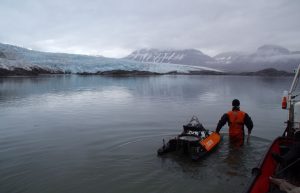 Inevitably, we end up parking in a huge mud puddle which makes loading the boat, jumping in the suits, and carefully carrying the project’s treasure into the water instantly more challenging. Once onboard, we tie up the orange USV and head out to Billefjorden, all the way in, to where Nordenskiöldbreen meets the icy waters. After installing the batteries, checking that everything is in place, and heaving the USV into the water, it basically is a one-man’s job.
Inevitably, we end up parking in a huge mud puddle which makes loading the boat, jumping in the suits, and carefully carrying the project’s treasure into the water instantly more challenging. Once onboard, we tie up the orange USV and head out to Billefjorden, all the way in, to where Nordenskiöldbreen meets the icy waters. After installing the batteries, checking that everything is in place, and heaving the USV into the water, it basically is a one-man’s job.
While Victor remotely maneuvers the robot boat along the 5 m depth isocline, recording the echosound and CTD data on its way and stopping every now and then to take footage with the drop camera, Milan and I chat about the project. It is part of FACE-IT, an EU project which I already got interested in back home at the hosting University of Bremen. The study investigates the importance of land influx and cryosphere changes for marine biodiversity and abundance, with a focus on littoral fish and macroalgae communities.
In times of climate change, the decline of sea-ice and sea-terminating glaciers in the Arctic, are assumed to impact the ecosystem’s diversity and its functioning in the littoral fjord areas of Spitzbergen. The increasing influx of Atlantic waters, the so called Atlantification, moreover, brings along invasive species that may compete with native Arctic species.
While we are sipping our tea, we suddenly spot a female polar bear with two cubs in the distance. As they take to the water, not swimming straight at us, but observing us constantly, we decide to take out the USV and leave to another sampling area. Around 15:20 the batteries run low and force us to abort the sampling.
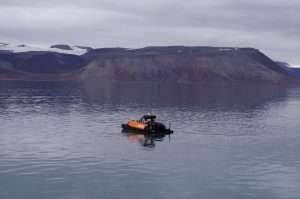
The drive back, re- and unloading, rinsing everything with fresh water, etc. takes us another two hours, so we call it a day and agree to take a look at the processed data together some other time, for me to gain a more comprehensive understanding of measurements. Back home, I can still feel the slight rocking of the boat and am very satisfied after such a nice time out in the field!
Through my last two field sampling trips during the Polar night period I have been so lucky to be assisted by a UNISprout bachelor student – Johannes, who had applied to join in on a 40 hour internship within my project. I myself am a PhD student from India doing research on potential changes in biodiversity, community composition and functions of microbial eukaryotes with respect to the changing climate in the Arctic.
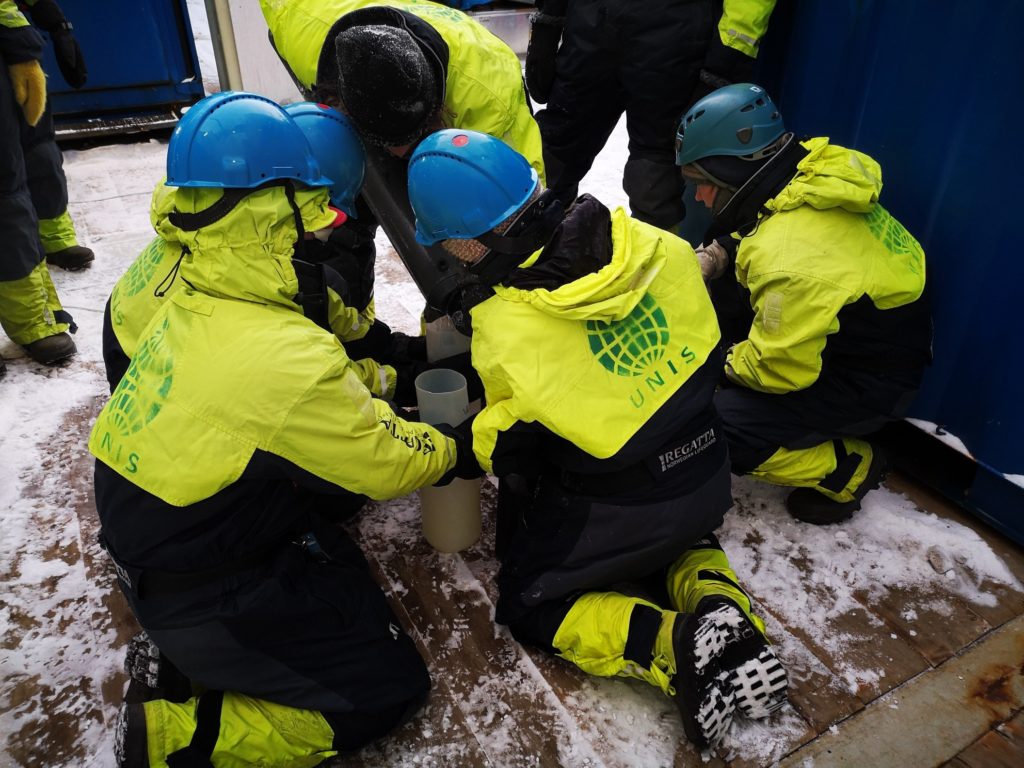
My fieldwork mainly focuses on collecting monthly water samples to estimate the change in diversity and compositional measures for protist communities at the IsA station, a well-established time series station laying in the mouth of Adventfjorden. To be able to reach this station, the UNIS boat Polar Circle is used during the summer/autumn season and the Governors boat Polarsyssel during the winter and spring season.
Fieldwork like this has to be planned and organized well, especially considering the conditions that exist in January and February at Svalbard with total darkness and freezing cold temperatures out on the fjord. This involves some packing slightly in advance, despite being on shorter fieldtrips like these. This is also a part of being a scientist, and Johannes joined in on this work as well. The packing usually takes us half a day – finding equipment, putting it all in one place, packing suitable clothing etc. We also ensure a day before sampling that our filtration equipment is ready for the next day.
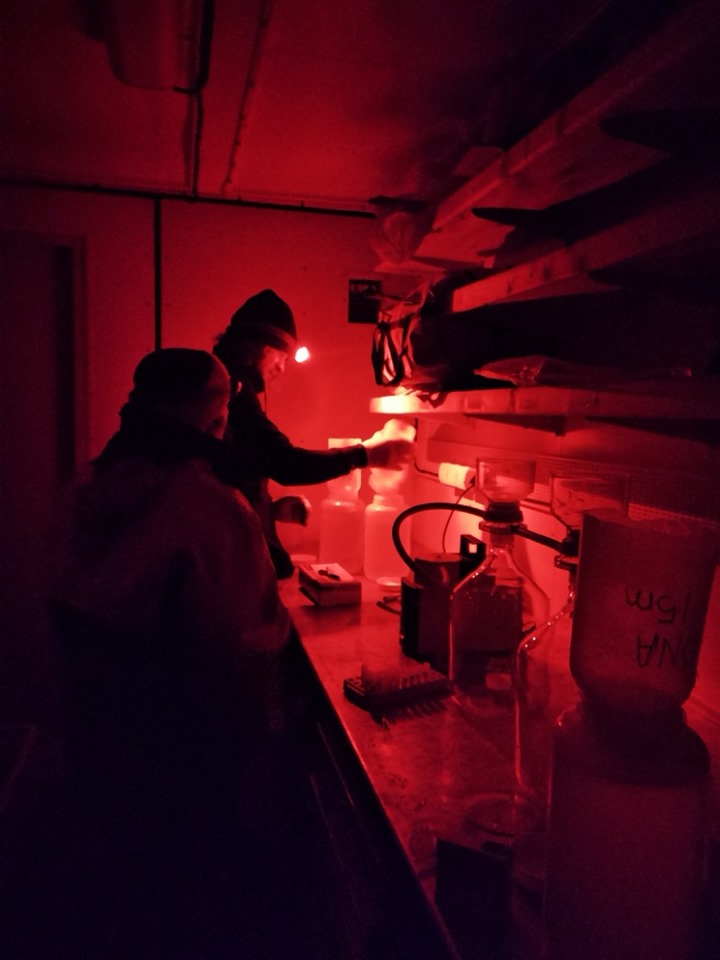
The sampling days are usually long starting off with half a day of fieldwork out on the fjord before heading back to UNIS to conduct filtrations of the collected water samples for the rest of the day. It was both Johannes’ and my first-hand experience with winter sampling. While the cold fingers and strong breeze slowed down our work on the boat it did not break our motivation to get the job done. The field tasks involve collecting plankton with a plankton net and sending down the CTD to record temperature, salinity, fluorescence, conductance etc. of the water column. We also collect water samples at two different standard depths with the help of a niskin bottle for several different kinds of measurements and take light measurements with the help of a Li-Cor around noon to measure the amount of light reaching in the water column.
Even though this was a short term arrangement due to the Corona situation, it has been a great opportunity for me to have a bachelor student helping me with my fieldwork. And I think it is important as well for the bachelor students to have such a learning experience. It is for this reason, I feel that UNISprout acts as a bridge between the researchers of today and the researchers of tomorrow. Through projects like this, we as researchers get an opportunity to work with bachelor students on real current research and to train them on skills that will be important also for their future career.
Cheshtaa Chitkara
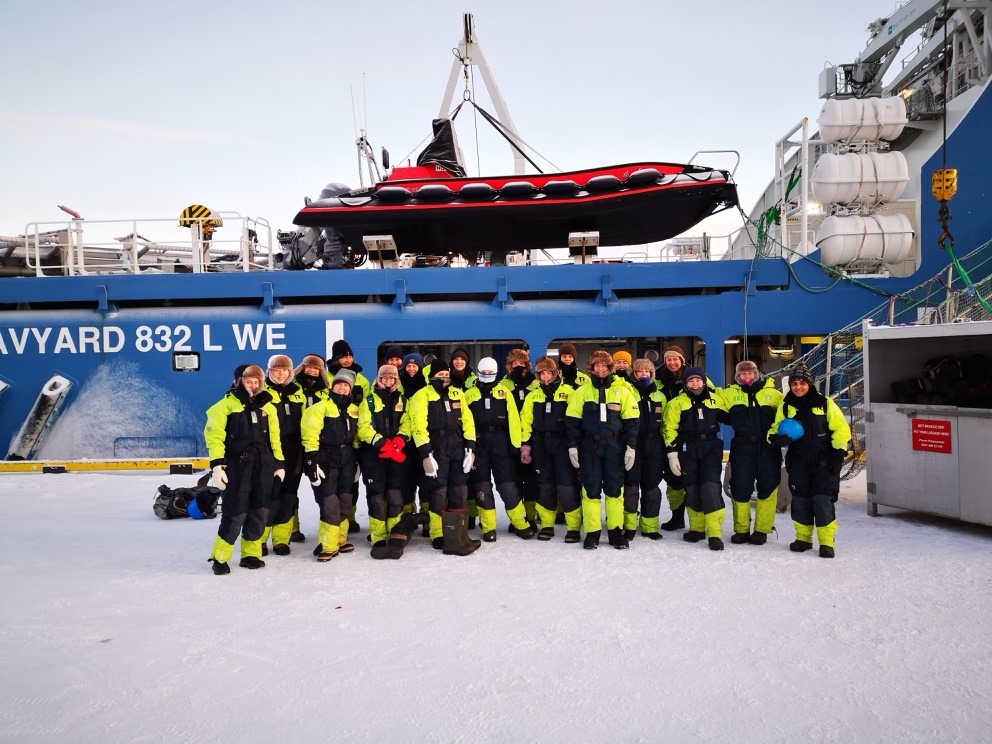
Post na
 bioCEED at UNIS has now launched an exciting project – UNISprout where biology students can gain practical training within 40 hours in the field of Biology. The project is similar to the already existing project bioSPIRE in Bergen and aims to:
bioCEED at UNIS has now launched an exciting project – UNISprout where biology students can gain practical training within 40 hours in the field of Biology. The project is similar to the already existing project bioSPIRE in Bergen and aims to:
- help bachelor students in biology (the “sprouts“) get a taste of practical biology by participating in a more experienced student’s project on the field or at the lab
- give Master and PhD students the chance to inspire the younger ones by inviting them in their project and communicating their passion, while they get a bit of help collecting samples or data
- facilitate networking for students within the department and between different levels of education

Photo: Tina Dahl and Simen Hjelle
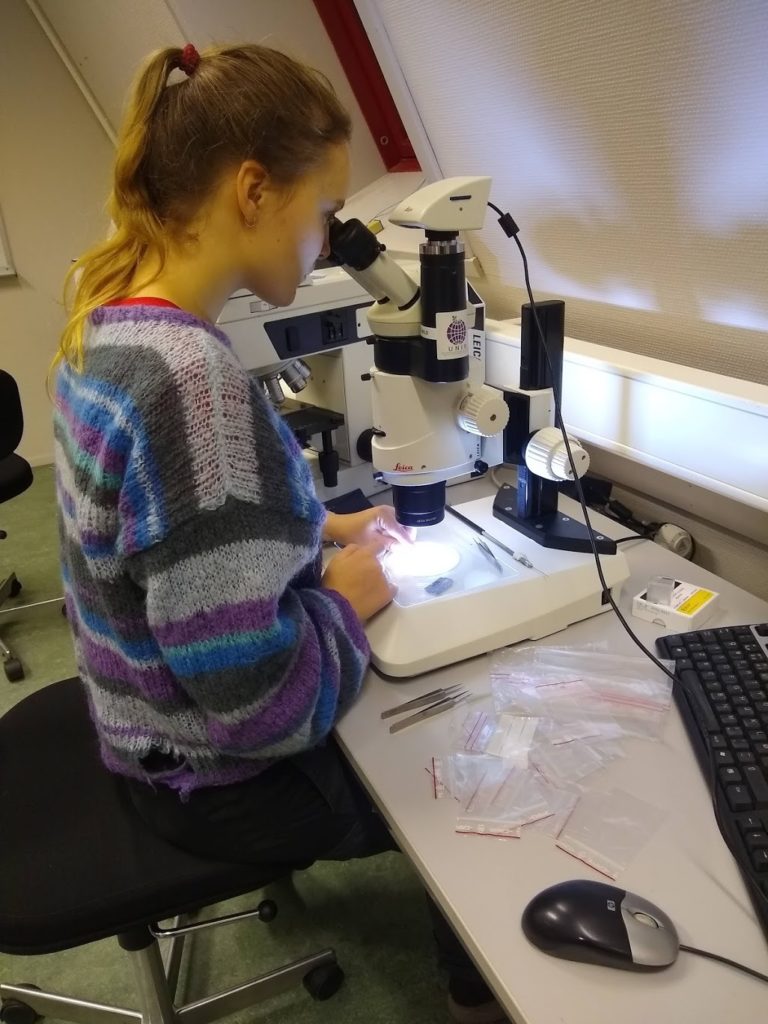 This fall,
This fall,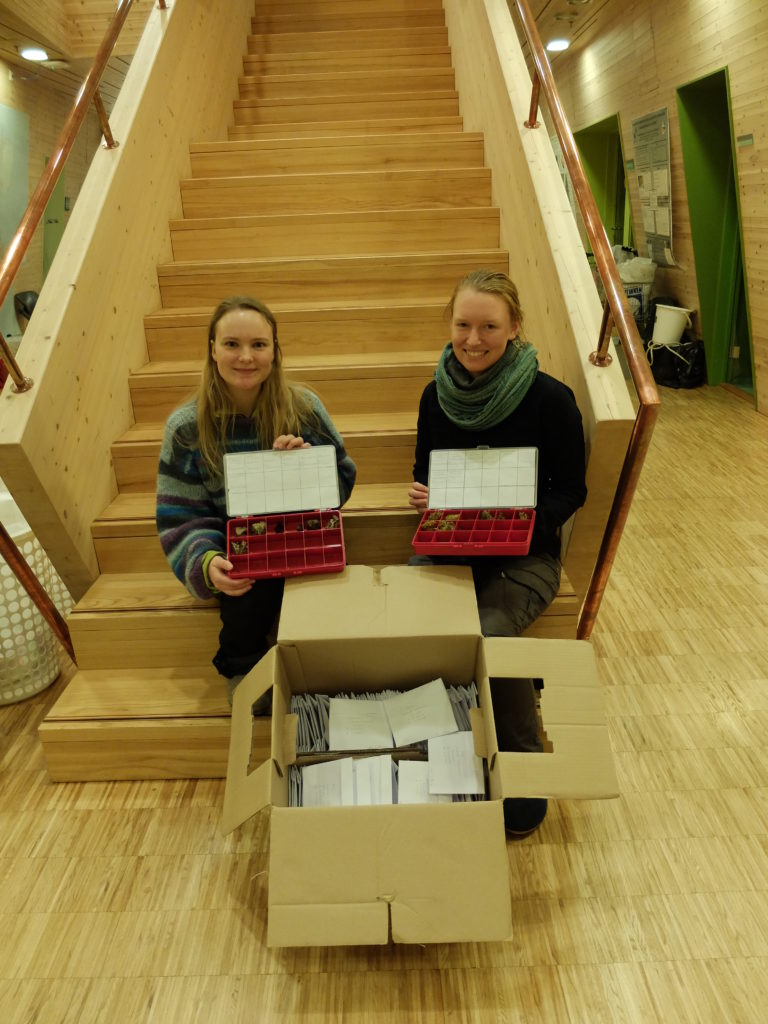 Sari and Annie assisted Simone Lang in processing and identifying bryophyte and lichen samples, which had been collected on a field cruise during the summer. They learned the proper technique for pressing samples and preparing herbarium vouchers. They dissected bryophyte shoots and very carefully prepared leaf-cross sections for identification - bryophyte identification is often based on the shape of individual cells!
Sari and Annie leave behind them over 100 samples now neatly packed in herbarium vouchers and two exhibition boxes with bryophyte and lichen samples, which will be used in future courses to introduce students to common bryophytes and lichens.
The project was a huge success for all involved and it is very exciting to have UNISprout up and running at the University Centre in Svalbard!
by: Anne Marie Colgan - student representatives, bioCEED
Sari and Annie assisted Simone Lang in processing and identifying bryophyte and lichen samples, which had been collected on a field cruise during the summer. They learned the proper technique for pressing samples and preparing herbarium vouchers. They dissected bryophyte shoots and very carefully prepared leaf-cross sections for identification - bryophyte identification is often based on the shape of individual cells!
Sari and Annie leave behind them over 100 samples now neatly packed in herbarium vouchers and two exhibition boxes with bryophyte and lichen samples, which will be used in future courses to introduce students to common bryophytes and lichens.
The project was a huge success for all involved and it is very exciting to have UNISprout up and running at the University Centre in Svalbard!
by: Anne Marie Colgan - student representatives, bioCEED 
